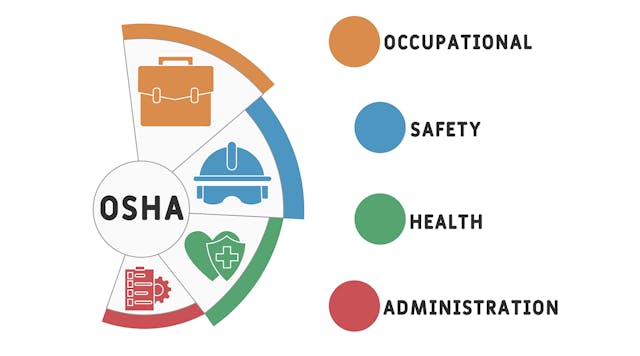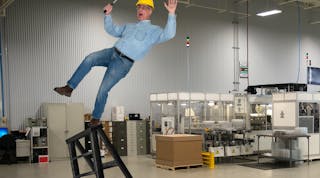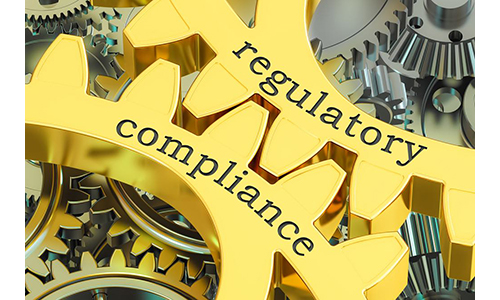As safety professionals look to build or strengthen safety cultures throughout their enterprises, drive continuous improvement, improve productivity, and achieve operational excellence, they may benefit from learning seven traits shared by successful leaders who humanize safety.
While focusing on peer-to-peer safety practices that predated the current focus on data and analytics, safety leaders have been able to balance technology and information with worker engagement, motivation and communication.
Whether your immediate focus is to improve employee engagement, introduce new processes, or completely transform the safety culture of your organization, embracing the following characteristics can help you achieve results faster, easier and with the added benefit of sustainability.
1. Be authentic.
As you try to build your safety program, people will not believe in you or trust you if you are not authentic. They must believe in you before they believe in your message. Authenticity comes from within, so you literally have to walk the talk.
Go on Gemba walks; get out onto the factory floor, the worksite, or wherever work is being performed and speak with employees one-on-one. Listen intently to your people and hear what they say. Ask the question: “If there’s one thing that we could change to make your job safer, what would it be?”
Keep track of how many times Gemba walks are done by your safety team members and how often you’ve implemented change based upon the feedback you’ve received. Some words of wisdom: Talk with your team—and not down to them. Embrace empathy; put yourself in the workers’ shoes and make a genuine effort to understand what they’re experiencing.
2. Become influential.
This goes hand in glove with authenticity. In effect, your authenticity will determine your ability to influence the behavior of others. You can’t be influential over someone you don’t have a relationship with. So, drop the act: Don’t undermine your authenticity by trying to “act” like a manager or a safety professional instead of just being who you are.
Be present in the workforce and take advantage of opportunities to engage workers individually in informal situations, such as the break room, to help remove the barriers your different roles place between you and other employees. Remember as well that safety can’t be a one-person show; it involves continually finding and recruiting influencers at your jobsite, bringing them into your group and keeping them engaged. This enables you to maintain and expand the influence of your safety team on the workplace.
Keep these influential workers engaged by taking a proactive and genuine interest in what they’re doing and by finding out what’s important in their lives. Don’t underestimate the power of rewards. Their significance is in recognizing an individual for an action or behavior and doesn’t need to have monetary value. For example, simple incentives, such as safety performance or leadership stickers (which construction workers often proudly display on their helmets), help keep influencers motivated. They are one of the keys to influencing behavior in the workplace when your safety team is not there.
3. Be a servant leader.
The concept of “servant leadership” is a non-traditional leadership philosophy, involving behaviors and practices that emphasize the well-being of those being served (i.e., employees and customers).
Traditional leadership typically focuses on strategy, goals, financial performance, and customer satisfaction as top priorities. While those standards are important, they are inherently limited; servant leaders go further, focusing on creating an environment where their teams can thrive and accomplish their highest-impact work. This selfless leadership approach believes elevating the team will in turn raise the level of all aspects of the team’s performance. Re-imagine your self-image and embrace the concept: “I’m here to serve the greater good of this group of people whom I work with.”
Finally, to be a servant-leader, you really need to make it part of who you are; you can’t just try to project this mindset when you’re out in the workplace. Be a mentor; lead by example; bring influencers into the safety “tribe”; appreciate how critical they are to your safety initiative; and be honest and engaging so they continue to trust you and believe in you.
4. Focus on long-term results.
When you look at the “big picture” of your overall safety program, chart your progress along a continuum. Recognize that making a series of what might be considered small changes to achieve marginal gains ultimately will add up to sustainable performance improvement over the long run.
By keeping track of the face-to-face interactions that you and your team have with individual workers along with any incremental gains that result from these dialogues, you’re creating a sustainable pattern of continuous improvement in safety performance that will lead to the achievement of your long-term objectives for safety, incident reduction and productivity improvement.
5. Be courageous.
There’s a time when every safety leader must speak up in their interactions with management and senior executives, explaining what’s needed from them to help improve safety and performance. Unfortunately, too often, we’re all guilty of not being courageous enough and fall short of what we need to do—or ask for—to make sure leadership provides the support or resources needed to advance the safety initiative.
By recognizing our own shortcomings, we can try to avoid cascading a lack of courage within your team and throughout the workforce. Encourage your team members and workers to speak up. Strive to increase participation in your safety program. Keep track of how many people actively participate in your safety meetings. Instill courage in your workers from top to bottom, bottom to top, and across the entire enterprise. Actively recruit volunteers to help with training, instruction, improved work processes and safety regimens.
6. Become a data 'beast.'
Scrutinize available loss and incident data on a timely basis to find out what’s working and what’s not in your safety initiative. What’s being neglected? What doesn’t translate in your training to the performance on the work floor? Use data to help determine where you need to focus attention, not only with respect to business processes and operations but more importantly in identifying breakdowns with people, communications, coaching and training.
Review your leading indicators system with people who understand what are statistically significant contributors to safety improvement. Capture information from your coaching interactions. Track achievement and certification, and don’t overlook the need to constantly measure your human-to-human interactions.
Track leading indicators over lagging indicators. Recognize that incident rates, while important, are the result of many complex actions outside the control of the safety program and therefore are a poor indicator of safety performance. Leading indicators focused on the actions of your team are directly under the control of the team and thus are much more relevant indicators of your safety program’s effectiveness. Remember, what gets measured is what gets done.
At the same time, your safety team members, operational supervisors and workers need to be comfortable with leveraging technology; today, there’s still too much safety-related and incident data that’s paper-based. Collecting, recording and sharing information on paper delays the ability to act quickly.
Understand what data you need to collect to drive where you direct your team’s influence. Focusing only on the metrics can put blinders on the human element. Recognize that while policies, procedures and paper all contain a great deal of information, it’s people who are influential.
Use the data you get from hazard assessments, coaching interactions and follow-up to training. Across your operations, the comfort level with your safety program will increase when workers at all levels realize the focus on safety is primarily for the benefit of each individual worker rather than solely to support the company’s profit objectives.
For instance, tracking and using workers’ compensation costs are important, but they can be disassociated from the people on the work floor. Show workers data that are most important to them. Know what data to collect to influence what people focus on in their jobs.
7. Take action.
The combination of all these traits enables and encourages workers to participate actively in your safety program. It won’t happen overnight but will take time to breed consistency as more workers embrace your efforts and want to be part of your safety tribe. Giving reporters timely feedback and follow-up on how their suggestions resulted in actions (or were reviewed, considered, or discussed) will keep them motivated, encourage them to spread the word, and increase participation in safety programs.
By engaging in these dialogues, you give more people in your organization the ability to be part of the process. As a result, you’ll see material changes in your safety program, including more robust and timely safety inspections and investigations of incidents and near misses.
By humanizing your safety program, listening to your people, getting their input and buy-in, and obtaining their feedback, workers at every level will come to realize that safety isn’t just part of the job—it is the job. When that happens, you’ll see material changes in your safety program, including fewer incidents and near misses, better productivity, greater employee satisfaction, and continuous improvement in overall safety performance.
Terry Evans is division safety manager, Wood Products at Boise Cascade Company, a producer of engineered wood products and plywood.
Roger Audino is the EHS practice lead at Origami Risk, a provider of integrated SaaS solutions for the risk, safety and insurance industries.















































































